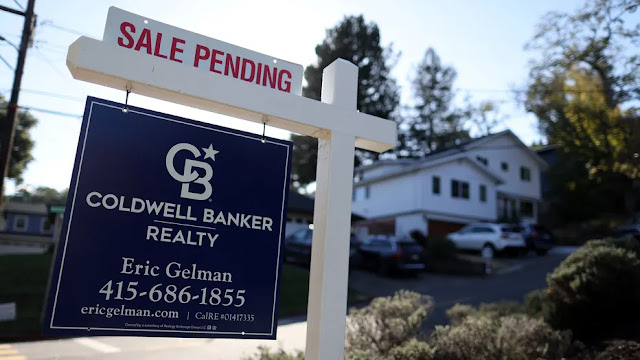California's Home Insurance Crisis: The Real Estate Industry Adjusts
Introduction
California is no stranger to natural disasters. From wildfires to earthquakes, the state’s unique geography and climate pose significant risks to homeowners and insurers alike. In recent years, the growing frequency and intensity of these events have culminated in a home insurance crisis that is forcing the real estate industry to adapt in unprecedented ways. This article delves into the underlying causes of California’s home insurance crisis, its impact on homeowners and real estate professionals, and the strategies being employed to navigate these turbulent waters.
Understanding the Crisis
Rising Natural Disaster Risk
The frequency of natural disasters in California has soared over the past decade. Wildfires, in particular, have devastated communities, leading to substantial property losses. The California Department of Forestry and Fire Protection reported that over 9,000 wildfires burned nearly 4 million acres in 2020 alone. Coupled with a history of seismic activity, these factors contribute to an increasingly volatile insurance landscape.
Insurer Withdrawals and Rate Hikes
In response to rising risks and claims, many insurance companies have reevaluated their portfolios in California. Consequently, several major insurers have pulled out of high-risk areas, and those that remain have raised their rates significantly. According to data from the California Department of Insurance, homeowners in fire-prone regions have experienced premium increases of up to 300% in recent years. This phenomenon has left many residents struggling to find affordable coverage, increasing the urgency of the issue.
Impact on Homeowners
Struggling to Secure Coverage
As insurance companies tighten their underwriting standards, many homeowners find themselves either unable to secure coverage or facing exorbitant premiums. Homeowners living in high-risk areas are particularly disadvantaged, with some receiving non-renewal notices that render them uninsured. The lack of affordable insurance can dissuade potential buyers from entering the market, leading to decreased property values and a stunted real estate market.
Financial Burden and Risk
The rising cost of insurance premiums imposes a significant financial burden on homeowners. For many, insurance is not just a regulatory requirement but a crucial aspect of financial security. Higher premiums can divert funds from other essential needs, impacting the overall quality of life. Additionally, homeowners unable to secure insurance face the daunting risk of total loss without any financial fallback, further exacerbating their vulnerability to disasters.
Impact on the Real Estate Industry
Declining Property Values
The insurance crisis has led to a notable decline in property values in certain regions, particularly those identified as high-risk. Homebuyers willing to navigate the complex insurance landscape find it increasingly difficult to justify the costs associated with purchasing property in these areas. This decline in property values can create a domino effect, affecting local economies reliant on stable real estate markets.
Changing Buyer Preferences
As the insurance landscape shifts, so do buyer preferences. An increasing number of prospective homeowners are seeking properties in lower-risk areas, leading to increased demand for homes outside the traditional high-risk zones. This trend is prompting real estate agents to adjust their strategies, with an emphasis on highlighting properties that boast lower insurance costs and risks associated with natural disasters.
Strategies for Adaptation
Risk Assessment and Management
To navigate the home insurance crisis, the real estate industry is focusing on improved risk assessment and management strategies. Real estate agents and brokers are increasingly educated on the risks associated with specific properties and neighborhoods. By leveraging data analytics and sophisticated modeling tools, they can provide potential buyers with a clearer understanding of risk factors, helping them make informed decisions.
Emphasizing Resilience
Another vital strategy involves emphasizing resilience and sustainability in property listings. Features such as fire-resistant materials, defensible space, and retrofitted structures can make homes more attractive to buyers, particularly in high-risk areas. Marketing these resilient features not only enhances property value but also makes homes more insurable, benefiting both homeowners and real estate agents.
Collaboration with Insurers
To address challenges posed by the insurance crisis, real estate professionals are beginning to collaborate with insurers more effectively. Working closely with insurance companies can help professionals stay abreast of policy changes, allowing them to better inform clients about practical steps for securing insurance. Insurers, in turn, may find it beneficial to work with real estate professionals to develop solutions that better mitigate risks.
Advocacy for Policy Changes
The crisis has prompted calls for policy reforms at the state level, focusing on insurance regulations and disaster preparedness. Industry organizations are advocating for measures that promote greater stability in insurance markets while ensuring that homeowners have access to affordable coverage. This includes discussions on state-backed insurance pools and strategies to incentivize investment in fire prevention and resilience programs.
Conclusion
California’s home insurance crisis is a complex and evolving challenge that adversely impacts homeowners and the real estate industry. However, by adapting to the changing landscape—through better risk management, emphasizing resilient building practices, and collaborating with insurers—real estate professionals can help mitigate the issue's effects. As California learns to navigate this crisis, there lies an opportunity for innovation and reform in how homeowners and the industry address the realities of living in a disaster-prone environment. By fostering a proactive approach, stakeholders can work towards a more stable and secure insurance future for all Californians.


Post a Comment for "California's Home Insurance Crisis: The Real Estate Industry Adjusts"